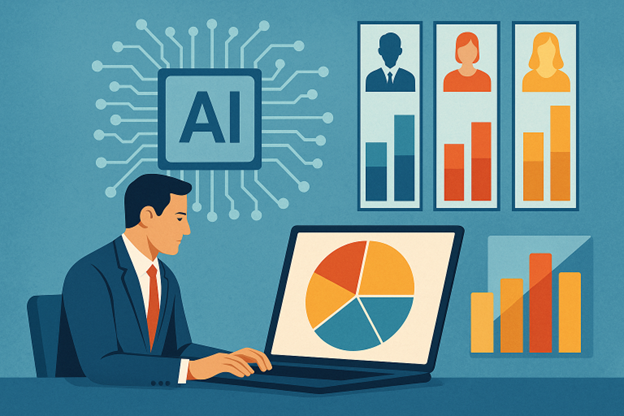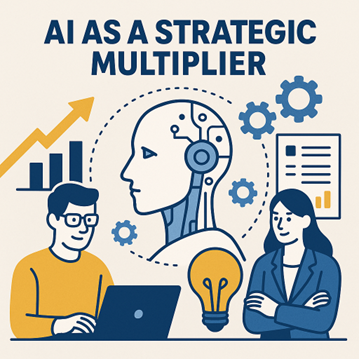How AI, Tools, and Human Insight Are Transforming B2B Segmentation
Segmentation has long been the holy grail of strategic marketing—essential, but difficult to execute at the depth most teams want. Needs-based segmentation, in particular, has always been powerful but time-intensive. Now, with AI in the mix, that’s all changing.
Suddenly, segmentation is becoming faster, deeper, and more usable across organizations. And not just for analysts and strategists—for frontline teams who need to act on it.
This is how segmentation gets smarter—and finally, scalable.
1. From Good Idea to Real Execution: Needs-Based Segmentation Gets Practical
For years, B2B marketers have known that segmenting by client needs—not industry, geography, or size—is the most strategic way to go to market. But the challenge has always been practical: how do you identify and bucket accounts by something as intangible as “needs”?
Now, you can.
With a solid framework in place (like our “diagonal ones” approach), AI can analyze a company’s website, investor statements, product positioning, and public communications to determine what benefits that company is seeking—and assign it to a segment accordingly.
That means:
- No more guessing whether an account is value-driven, innovation-led, or cost-focused.
- No more multi-segment approaches per stakeholder, e.g., a segmentation for procurement, one for users, etc.
- And no more segmentation that makes sense on paper but never reaches the field.
You get one consistent segmentation at the corporate level that aligns teams and simplifies execution.
2. AI Is the Multiplier—But It Needs Structure and Experience
AI isn’t magic. But it is a great multiplier.
It lifts the constraints that used to hold back great segmentation. Time, access to information, sample size—AI cuts through them all. But it still needs:
- A strategic structure to follow
- The right prompts to answer
- The right blend of experience and judgment to interpret what it gives you
For example, we’ve used our Vietnam Card Sort—a lightweight, fast way to uncover and validate customer benefit preferences—with dozens of clients over the years. When combined with AI, it becomes even more powerful. AI can detect and validate patterns across a small but representative sample, then extrapolate across a whole market segment.
This is where segmentation becomes fast, smart, and grounded in reality—not just theory.
3. Corporate-Level Segmentation with Stakeholder-Level Precision
One of the biggest shifts we’re seeing is how segmentation is moving from the stakeholder level to the corporate level. Historically, we asked: how do individual stakeholders differ in their priorities?
That created complexity—multiple segmentations for one company. It wasn’t scalable.
Now, we start at the company level. Why? Because every employee at Walmart, for example, better be focused on operational excellence and driving costs down or they won’t last long!
AI makes this practical by analyzing company-wide data: earnings calls, strategic plans, CEO letters. The result: a single segmentation that maps every company to one segment based on the way they differentiate themselves in the market, and every company in a territory to one and only one segment. This radically simplifies sales planning and messaging.
But we don’t stop there.
Once segments are in place, AI helps build segment-specific sales playbooks:
- Who drives decisions in a cost-focused segment vs. a patient-centric one?
- Which functions hold more influence—clinical, procurement, operations?
This leads to account blueprints that are tailored by decision logic, messaging, and even call plans.
Execution becomes easier, faster, and more relevant to the customer.
4. Another Benefit: Forecasting and Sizing, in Minutes
Once you know who’s in each segment, AI can help answer questions like:
- How many accounts fit each segment?
- What’s the revenue potential by segment?
- Where should we invest more—and less?
It’s a part of segmentation that used to take weeks of analysis—and now, with the right tools, it takes minutes. And better yet, it’s not guesswork. It’s grounded in observable behaviors and consistent logic.
Final Thought: Segmentation Isn’t Just Smarter. It’s Finally Scalable.
If you’ve ever built a segmentation model only to have it sit on the shelf, you’re not alone. Great segmentation doesn’t help if it can’t be used.
What’s changed is that now—thanks to AI, tested tools, and human insight—you can move from idea to insight to execution faster than ever.
And most importantly, it’s not just “good segmentation.” It’s the kind you can actually use.

 Mary Abbazia
Mary Abbazia Tom Spitale
Tom Spitale Sean Welham
Sean Welham

